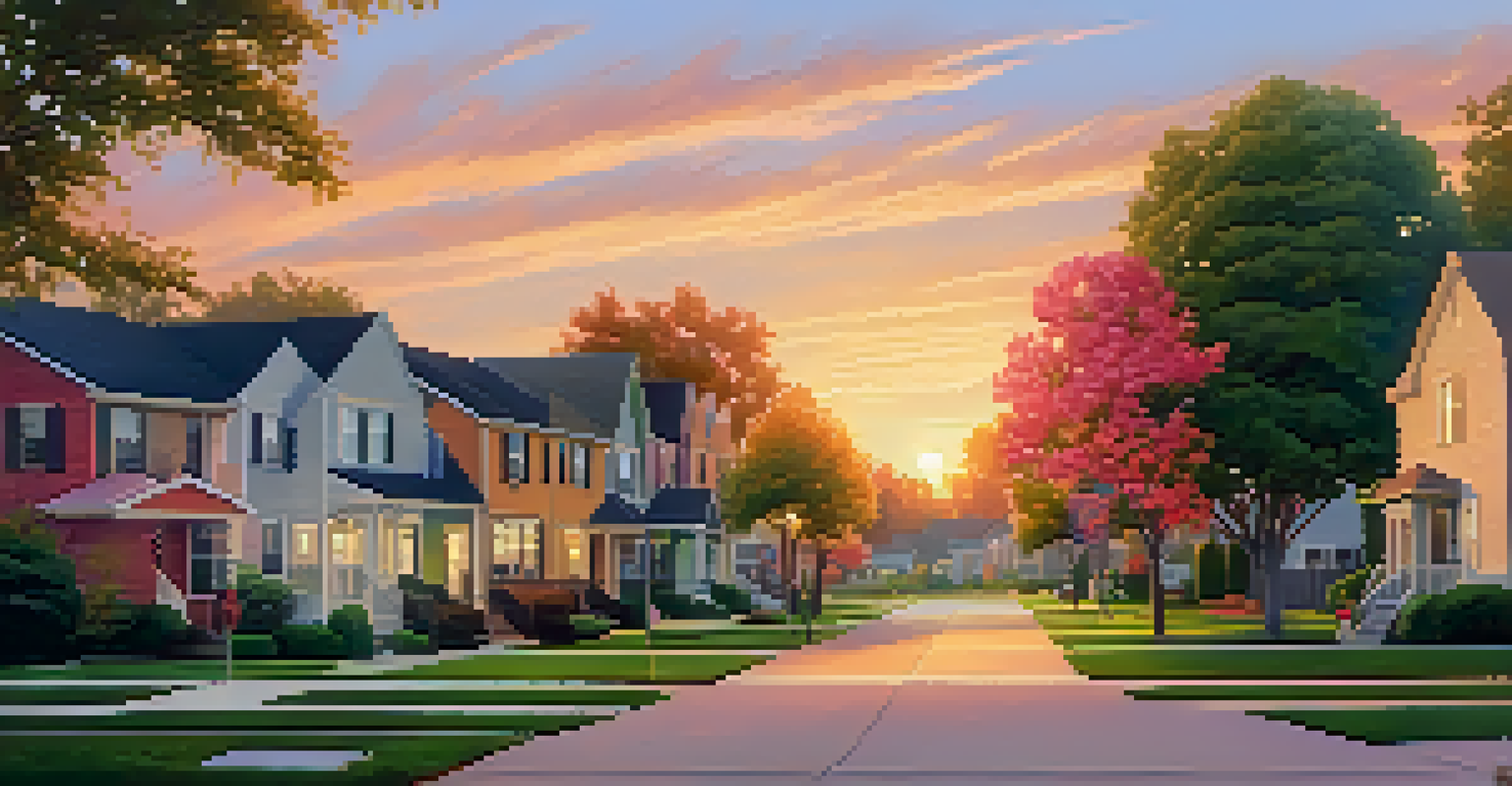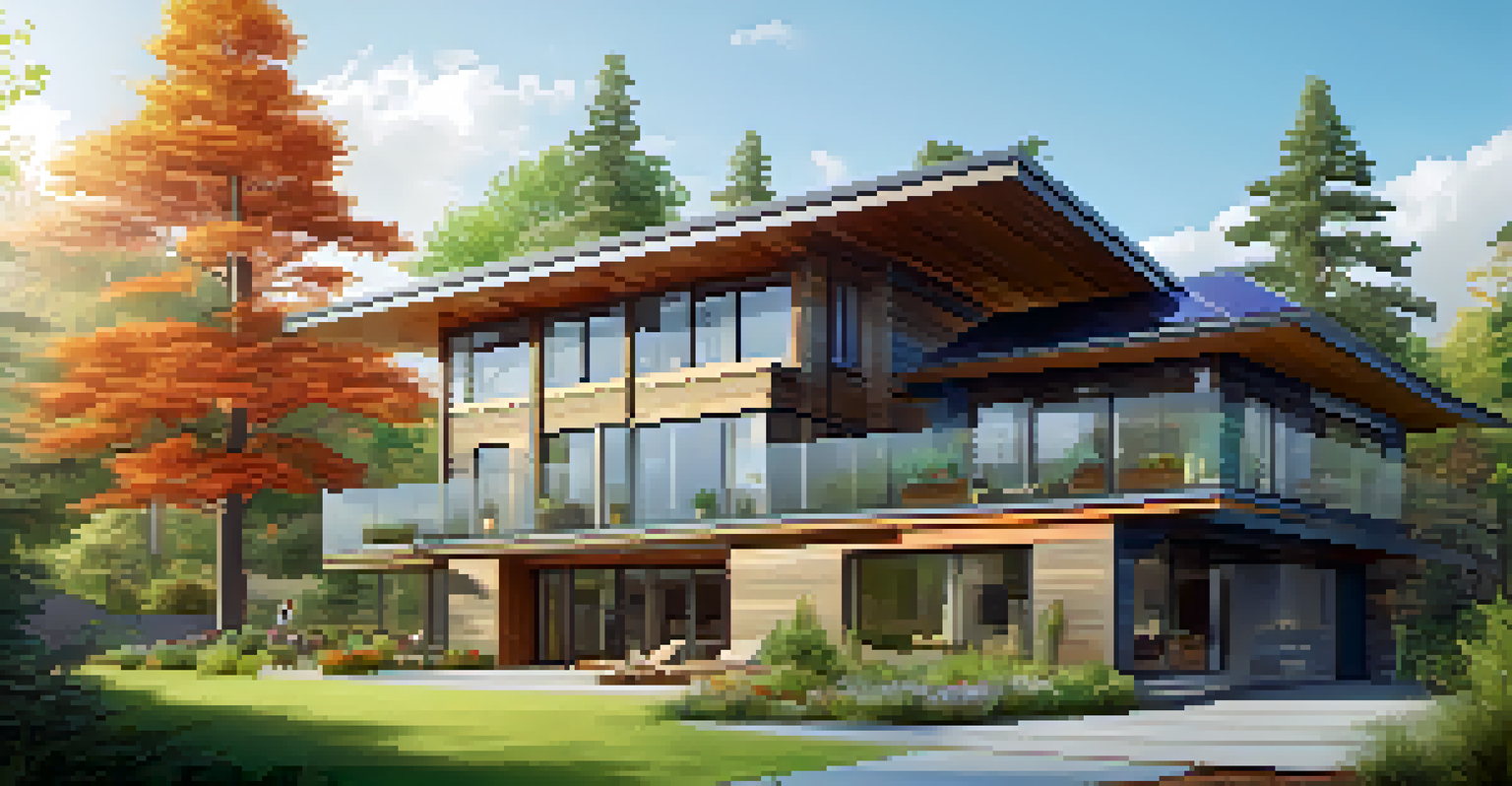Cultural Factors Influencing Real Estate Trends by Region

Understanding Regional Culture and Real Estate Dynamics
Real estate trends are deeply influenced by the cultural fabric of a region. Culture encompasses the traditions, values, and lifestyles that shape how individuals view property and community. For example, in urban areas, a fast-paced lifestyle may lead to a preference for smaller, conveniently located apartments.
The best way to predict the future is to create it.
Conversely, in suburban or rural settings, larger homes with spacious yards may be more desirable, reflecting a cultural emphasis on family and outdoor living. This divergence illustrates how cultural priorities directly inform housing choices and market demands.
Understanding these cultural nuances helps real estate professionals tailor their offerings to meet the specific needs of buyers in different regions, ensuring that properties resonate with local values and lifestyles.
The Role of Community and Social Values
Community plays a pivotal role in shaping real estate trends. In regions where social connections and community engagement are prioritized, properties that foster interaction—such as mixed-use developments—tend to thrive. This trend can be seen in neighborhoods that promote walkability and communal spaces.

On the other hand, areas that value privacy and personal space may see a rising demand for single-family homes in less densely populated settings. This reflects a cultural preference for solitude and personal boundaries.
Culture Shapes Real Estate Choices
Cultural values and lifestyles significantly influence housing preferences, from urban apartments to suburban homes.
Real estate developers and agents must consider these social values when marketing properties, ensuring that they highlight features that align with the community's lifestyle and preferences.
Economic Factors and Cultural Perspectives
Economic conditions often intertwine with cultural attitudes towards homeownership. In cultures where homeownership is seen as a key to financial stability and social status, we witness higher demand for houses, particularly in regions with growing economies. This can create competitive markets, driving up prices.
Sustainability is no longer about doing less harm. It’s about doing more good.
In contrast, in areas where renting is more socially accepted, such as in major metropolitan cities, the focus may shift towards rental properties and shared living arrangements. This reflects a cultural shift towards flexibility and mobility, especially among younger generations.
Recognizing these economic and cultural interactions can guide real estate strategies, allowing stakeholders to adapt to changing market dynamics effectively.
Cultural Attitudes Toward Sustainability
Sustainability is becoming a key cultural consideration in real estate. Regions with a strong environmental consciousness often see a rise in demand for eco-friendly homes and developments. This growing trend reflects a cultural shift towards prioritizing environmental health and sustainability in daily life.
For example, in cities like Portland, Oregon, energy-efficient homes and green building practices are highly sought after, attracting buyers who value eco-conscious living. This cultural commitment to sustainability not only influences purchasing decisions but also shapes local regulations and building practices.
Community Impacts Property Demand
Social values and community engagement drive the popularity of properties that encourage interaction and shared spaces.
As a result, real estate professionals must stay informed about sustainability trends and promote properties that align with these values, appealing to environmentally aware buyers.
Impact of Demographics on Real Estate Preferences
Demographic factors, such as age, ethnicity, and family size, significantly influence real estate trends. For instance, millennials often prioritize urban living with access to amenities, while older generations may lean towards suburban properties that offer tranquility and space.
Moreover, diverse cultural backgrounds can shape housing preferences, such as the desire for multi-generational homes or specific architectural styles. Areas with a high concentration of particular ethnic groups may see homes that reflect their cultural heritage, further diversifying the real estate market.
By understanding these demographic influences, real estate agents can better cater to their clients' needs, ensuring that they find properties that resonate with their unique backgrounds and lifestyles.
Regional Traditions and Housing Styles
Regional traditions often dictate architectural styles and housing preferences. In areas with rich historical backgrounds, like New England, you may find colonial-style homes that reflect the region's history and culture. These traditional homes often attract buyers who appreciate both the aesthetics and the historical significance.
Conversely, in more modern or rapidly developing regions, contemporary designs may dominate the market, appealing to younger buyers who prefer sleek, innovative living spaces. This shift reflects a cultural embrace of modernization and change.
Demographics Drive Market Trends
Demographic factors such as age and ethnicity play a crucial role in shaping housing preferences and styles across regions.
Understanding these regional traditions allows real estate professionals to effectively market properties that align with local architectural preferences, making them more appealing to potential buyers.
The Influence of Technology on Cultural Trends
Technology is reshaping cultural trends and, subsequently, real estate preferences. The rise of remote work has led many individuals to seek homes with dedicated office spaces, reflecting a cultural shift towards work-life balance. This trend is particularly prominent in suburban areas where larger homes can accommodate new lifestyle needs.
Additionally, technology-driven platforms are changing how people search for and purchase homes. Virtual tours and online listings enable buyers to explore properties from the comfort of their homes, which is especially appealing in today's fast-paced world.

Real estate agents must adapt to these technological advancements, ensuring that they leverage available tools to meet the evolving demands of a tech-savvy population.